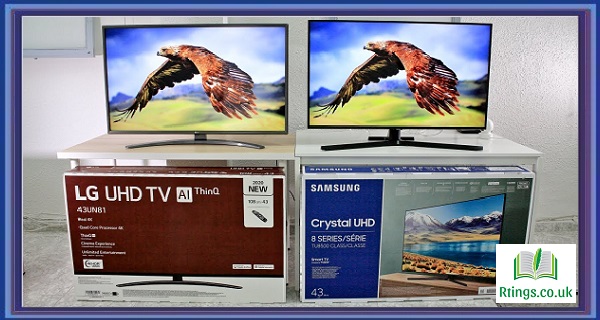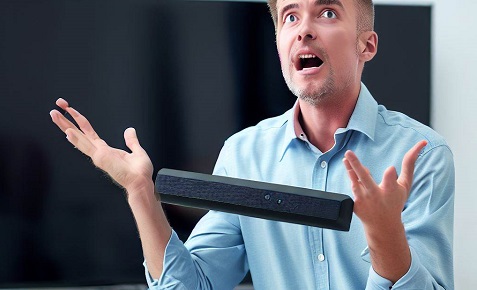Freeview is a UK digital terrestrial television platform that allows you to access a wide range of free-to-air channels without requiring a subscription. It is popular for viewers who want to access free TV channels without paying a monthly fee. If you have a smart TV, you can easily access Freeview channels by following simple steps. In this article, we will guide you through getting Freeview on a smart TV.
Check If Your TV Has a Built-in Freeview Tuner
The first step to getting Freeview on your smart TV is to check if your TV has a built-in Freeview tuner. Most modern TVs come with a built-in Freeview tuner, but if your TV is an older model, it may have a different feature. To check if your TV has a built-in Freeview tuner, consult the user manual or check the specifications on the manufacturer’s website.
If your TV does not have a built-in Freeview tuner, you can still access Freeview channels by purchasing a Freeview set-top box or a Freeview+ box. These devices connect to your TV via HDMI, allowing you to access Freeview channels without requiring a built-in tuner.
Connect Your Smart TV to the Internet
Once you have confirmed that your TV has a built-in Freeview tuner, the next step is to connect your smart TV to the Internet. This is important because Freeview channels are delivered over the Internet, and without an Internet connection, you cannot access these channels.
There are several ways to connect your smart TV to the Internet. The easiest and most common method is to connect your TV to your home Wi-Fi network. To do this, navigate to the settings menu on your TV and select the “Network” option. From there, you can search for available Wi-Fi networks and enter your Wi-Fi password to connect to the network.
If your TV does not have built-in Wi-Fi, you can connect it to the Internet using an Ethernet cable. Connect one end of the Ethernet cable to your TV and the other to your router or modem.
Access Freeview Channels
Once you have connected your smart TV to the Internet, you can access Freeview channels using the built-in Freeview tuner. To do this, navigate to the TV’s channel list and select the Freeview channels. The specific steps for accessing Freeview channels may vary depending on the make and model of your TV, so consult your user manual if you need help with how to do this.
In addition, to live TV channels, Freeview offers on-demand content through its Freeview Play service. This service allows you to catch up on TV shows you may have missed, and it also provides access to a range of on-demand content from popular streaming services like BBC iPlayer, ITV Hub, and All 4.
To access Freeview Play on your smart TV, you must ensure that your TV is compatible with the service. Most modern smart TVs are compatible with Freeview Play, but you should consult your user manual or check the manufacturer’s website to confirm this.
Once you have confirmed that your TV is compatible with Freeview Play, you can access the service by selecting the Freeview Play app from your TV’s app store. From there, you can browse the available on-demand content and select the shows or movies you want to watch.
Troubleshooting
If you are having trouble accessing Freeview channels on your smart TV, there are a few troubleshooting steps you can try. Here are some common issues and their solutions:
No signal: If you are not receiving a signal when you try to access Freeview channels, check your TV’s connected to the Internet and make sure that your TV is connected to the correct input. You should also check the signal strength in your area by entering your postcode on the Freeview website.
- Missing channels: If you are missing channels on your Freeview list, try rescanning for channels. This can be done through the settings menu on your TV.
- Poor picture quality: If you are experiencing poor picture quality, try moving your TV or adjusting your antenna to improve the signal strength.
- Freezing or buffering: If you are experiencing freezing or buffering when watching Freeview channels, try resetting your TV or router or connecting your TV to the Internet using an Ethernet cable instead of Wi-Fi.
Conclusion
Getting Freeview on a smart TV is a relatively simple process that can be done in just a few steps. By ensuring that your TV has a built-in Freeview tuner, connecting your TV to the Internet, and accessing Freeview channels through your TV’s channel list or the Freeview Play app, you can enjoy a wide range of free TV channels and on-demand content without having to pay a monthly subscription fee. If you experience any issues, troubleshooting steps such as rescanning for channels or adjusting your antenna can help resolve the problem.
Frequently Asked Questions (FAQs)
What is the difference between Freeview and Freeview Play?
Freeview and Freeview Play are digital terrestrial television platforms in the UK that allow you to access free-to-air TV channels without requiring a subscription. However, there are some differences between the two services.
Freeview offers access to over 70 standard and high-definition channels and 15 HD channels, all of which can be accessed using a built-in Freeview tuner on your TV or a Freeview set-top box. Freeview does not offer any on-demand content.
On the other hand, Freeview Play offers the same live TV channels as Freeview and access to a range of on-demand content from popular streaming services like BBC iPlayer, ITV Hub, and All 4. Freeview Play also offers features like the ability to pause, rewind, and record live TV.
To access Freeview Play, your TV must be compatible with the service. Most modern smart TVs are compatible with Freeview Play, but you should check your TV’s specifications or consult your user manual to confirm this.
In summary, Freeview is a basic free-to-air TV service that offers live TV channels, while Freeview Play offers the same live TV channels as well as access to on-demand content and additional features like pausing, rewinding, and recording live TV.
Can I access Freeview on a non-smart TV?
You can access Freeview on a non-smart TV using a Freeview set-top box or a Freeview recorder. These devices can be connected to your TV via HDMI or SCART cables, allowing you to access all of the Freeview channels available in your area.
Freeview set-top boxes are small devices that connect to your TV and allow you to access Freeview channels without needing a built-in Freeview tuner. Freeview recorders offer the same functionality as set-top boxes but allow you to record TV programs and pause and rewind live TV.
Freeview set-top boxes and recorders are widely available at electronics stores and online retailers and are relatively affordable. They typically come with a remote control that allows you to navigate the Freeview channel list and access additional features like on-screen program guides.
If you have an older analog TV, you may need a digital TV converter box and a Freeview set-top box or recorder to access Freeview channels. This is because analogue TVs are incompatible with digital signals and require a converter box to convert the digital signal into an analogue format that the TV can display.
Do I need an internet connection to access Freeview on my smart TV?
While an internet connection is not strictly necessary to access Freeview on a smart TV, it can enhance your viewing experience and enable you to access additional features.
To access Freeview on a smart TV, you need to ensure that your TV has a built-in Freeview tuner and is connected to an antenna or aerial. Once done, you can access the Freeview channels using your TV channel list or the Freeview Play app.
However, if your smart TV is connected to the internet, you can access additional features like on-demand content and catch-up TV services through the Freeview Play app. This requires an internet connection and allows you to access content from BBC iPlayer, ITV Hub, All 4, and My5.
In addition, some smart TVs may require an internet connection to access software updates and security patches necessary for optimal performance. Even if you plan on using something other than the internet features of your smart TV, it’s a good idea to connect it to the internet periodically to ensure that it is up-to-date and secure.







